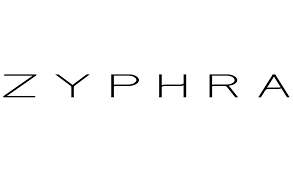
Zyphra
Founded Year
2021Stage
Series A | AliveTotal Raised
$11MValuation
$0000Mosaic Score The Mosaic Score is an algorithm that measures the overall financial health and market potential of private companies.
+110 points in the past 30 days
About Zyphra
Zyphra focuses on full stack probabilistic computing for AI and information processing in the technology sector. The company provides a platform for developing and testing AI models using probabilistic computing methods. It was founded in 2021 and is based in Palo Alto, California.
Loading...
Loading...
Expert Collections containing Zyphra
Expert Collections are analyst-curated lists that highlight the companies you need to know in the most important technology spaces.
Zyphra is included in 4 Expert Collections, including Unicorns- Billion Dollar Startups.
Unicorns- Billion Dollar Startups
1,297 items
Generative AI
2,951 items
Companies working on generative AI applications and infrastructure.
Artificial Intelligence (AI)
37,264 items
Companies developing artificial intelligence solutions, including cross-industry applications, industry-specific products, and AI infrastructure solutions.
AI agents & copilots
1,771 items
Companies developing AI agents, assistants/copilots, and agentic infrastructure. Includes pure-play emerging agent startups as well as companies building agent offerings with varying levels of autonomy.
Latest Zyphra News
Nov 3, 2025
November 3, 2025, 6:16 pm IST The prevailing narrative in AI infrastructure often centers on NVIDIA’s dominance, yet an intriguing counter-current is emerging, championed by companies like Zyphra. In a recent discussion on the Latent Space podcast, Alessio Fanelli spoke with Quentin Anthony, Head of Model Training at Zyphra and advisor at EleutherAI, delving into Zyphra’s bold strategic pivot to AMD hardware and its implications for the future of AI model development and deployment. Anthony’s insights reveal a philosophy of deep technical engagement, challenging industry complacency and demonstrating a path to competitive advantage. Zyphra, a full-stack model company, handles everything from data curation to model deployment, with a particular focus on edge AI. A significant strategic decision for the startup was to migrate its entire training cluster to AMD. “We recently moved all of our training cluster over to AMD,” Anthony stated, highlighting a belief that AMD offers “really compelling training clusters” that significantly reduce their operational costs. This move was not without its foundational challenges, rooted in Anthony’s prior experience working on the Frontier supercomputer at Oak Ridge National Lab, which is entirely based on AMD MI250X GPUs. This necessity forced him to port complex operations like Flash Attention to AMD hardware, an arduous but ultimately revealing process. Anthony’s direct experience underscores a critical insight: while NVIDIA has historically held a software advantage, AMD’s latest MI300X GPUs offer compelling hardware metrics. He notes that for memory-bound operations or those involving parallelism, AMD’s MI300X, with its 192GB VRAM and superior memory bandwidth, can outperform NVIDIA H100s. “The less time you spend in like dense compute… and the more time you spend in parallelism or moving to and from HBM, AMD MI300X actually has quite a bit better hardware metrics on those,” Anthony explained. This suggests that for specific workloads, especially those not reliant on FP8 dense computations, AMD presents a potent and cost-effective alternative. The journey to harness AMD’s potential, however, demanded an unconventional approach to kernel development. Anthony openly critiques the industry’s tendency towards high-level frameworks like Triton, opting instead for direct coding in ROCm or even GPU assembly when necessary. His philosophy is distinctly “bottom-up”: understanding the intrinsic properties of the hardware first, then designing algorithms to fully exploit those capabilities. This stands in contrast to a “top-down” approach that might abstract away hardware specifics, potentially leaving performance on the table. He posits that much of the perceived “software problem” with AMD was partly historical hardware limitations and a lack of dedicated, low-level optimization efforts. “If you evaluate everything evenly, you find these sort of diamonds in the rough,” he remarked, suggesting that many developers simply haven’t pushed the envelope with AMD’s ecosystem, creating an opportunity for those willing to do the deep work. Zyphra’s innovation extends to its model architectures. The company has been at the forefront of state-space model hybrids, like their Zamba 2, which combines transformers and Mamba2 blocks. Anthony proudly notes that Zamba 2, a 7B parameter model, can match the performance of Llama 3 8B. These models are optimized for edge deployment, scaling from 1.2B models for phones to 7B for desktops, demonstrating a commitment to efficient, on-device AI. This strategy of developing a spectrum of models tailored to diverse hardware constraints, from resource-limited edge devices to more powerful local clusters, is key to their vision of ubiquitous AI. Related Reading Anthony also offered candid thoughts on AI’s role in developer productivity and the challenges of low-level code generation. While acknowledging AI’s utility for high-level tasks like code fusion or generating boilerplate, he remains skeptical about its current ability to produce optimized, low-level GPU kernels. He finds that models often generate “dead basic” or outright incorrect low-level code, which is then difficult to debug due to the inherent parallelism and complexity of GPU operations. He prefers direct API access over tools like Cursor, prioritizing complete control over context and avoiding the “slot machine effect” of endlessly prompting models. The challenge of creating robust kernel datasets and reliable evaluation metrics further complicates AI’s role in this domain. The path Zyphra is forging with AMD is a testament to the power of deep technical expertise and strategic hardware choices in a landscape dominated by a single player. By embracing the nuances of AMD’s architecture and investing in foundational kernel development, Zyphra is not only reducing costs but also achieving performance breakthroughs that could reshape the competitive dynamics of AI model training and deployment. Don't miss a beat
Zyphra Frequently Asked Questions (FAQ)
When was Zyphra founded?
Zyphra was founded in 2021.
Where is Zyphra's headquarters?
Zyphra's headquarters is located at 380 Portage Avenue, Palo Alto.
What is Zyphra's latest funding round?
Zyphra's latest funding round is Series A.
How much did Zyphra raise?
Zyphra raised a total of $11M.
Who are the investors of Zyphra?
Investors of Zyphra include Intel Capital, Future Ventures, Transpose Platform, Bison Ventures, Metaplanet and 4 more.
Who are Zyphra's competitors?
Competitors of Zyphra include Groq, Bloomfilter, Ampere, Anastasia, Activeloop and 7 more.
Loading...
Compare Zyphra to Competitors
Extropic operates in the field of computing through thermodynamic principles. It develops thermodynamic accelerated computing technologies and thermodynamic intelligence. The company serves sectors that require computing solutions, including deep tech and artificial intelligence. It was formerly known as Qyber. It was founded in 2022 and is based in Austin, Texas.

Groq specializes operates as an AI inference technology within the semiconductor and cloud computing sectors. The company provides computation services for AI models, ensuring compatibility and efficiency for various applications. Groq's products are designed for both cloud and on-premises AI solutions. It was founded in 2016 and is based in Mountain View, California.

d-Matrix specializes in AI inference technology within the computing sector. The company offers a platform named Corsair, which is designed to provide low-latency processing for generative AI applications. Corsair is a solution for data centers, aiming to make AI inference viable by addressing the balance between speed and efficiency. It was founded in 2019 and is based in Santa Clara, California.
KnuEdge is a company that develops a compute fabric for machine intelligence within the technology sector. The company provides a cloud platform that supports machine learning and artificial intelligence applications. KnuEdge serves sectors that require computing solutions, including the technology and artificial intelligence industries. It is based in San Diego, California.

Mythic is an analog computing company that specializes in artificial intelligence (AI) acceleration technology. Its products include the M1076 Analog Matrix Processor and M.2 key cards, which provide power-efficient AI inference for edge devices and servers. Mythic primarily serves sectors that require real-time analytics and data throughput, such as smarter cities and spaces, drones and aerospace, and augmented reality (AR) or virtual reality (VR) applications. Mythic was formerly known as Isocline Engineering. It was founded in 2012 and is based in Austin, Texas.

Tenstorrent is a computing company specializing in hardware focused on artificial intelligence (AI) within the technology sector. The company offers computing systems for the development and testing of AI models, including desktop workstations and rack-mounted servers powered by its Wormhole processors. Tenstorrent also provides an open-source software platform, TT-Metalium, for customers to customize and run AI models. It was founded in 2016 and is based in Toronto, Canada.
Loading...
